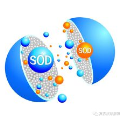Existing CNNs-based salient object detection (SOD) heavily depends on the large-scale pixel-level annotations, which is labor-intensive, time-consuming, and expensive. By contrast, the sparse annotations become appealing to the salient object detection community. However, few efforts are devoted to learning salient object detection from sparse annotations, especially in the remote sensing field. In addition, the sparse annotation usually contains scanty information, which makes it challenging to train a well-performing model, resulting in its performance largely lagging behind the fully-supervised models. Although some SOD methods adopt some prior cues to improve the detection performance, they usually lack targeted discrimination of object boundaries and thus provide saliency maps with poor boundary localization. To this end, in this paper, we propose a novel weakly-supervised salient object detection framework to predict the saliency of remote sensing images from sparse scribble annotations. To implement it, we first construct the scribble-based remote sensing saliency dataset by relabelling an existing large-scale SOD dataset with scribbles, namely S-EOR dataset. After that, we present a novel scribble-based boundary-aware network (SBA-Net) for remote sensing salient object detection. Specifically, we design a boundary-aware module (BAM) to explore the object boundary semantics, which is explicitly supervised by the high-confidence object boundary (pseudo) labels generated by the boundary label generation (BLG) module, forcing the model to learn features that highlight the object structure and thus boosting the boundary localization of objects. Then, the boundary semantics are integrated with high-level features to guide the salient object detection under the supervision of scribble labels.
翻译:基于CNN的现有显要物体探测(SOD)严重依赖大规模像素级的像素级说明,这种说明是劳动密集型、耗时和昂贵的。相比之下,稀少的注释对显要物体探测界变得很吸引。然而,很少致力于从稀少的注解中学习显要物体探测,特别是在遥感领域。此外,稀少的注解通常包含很少的信息,因此很难训练出一个表现良好的模型,因此其性能在很大程度上落后于完全监督的模型。虽然一些SOD方法采用一些先前的提示来改进探测性,但它们通常缺乏目标边界特征的定向区分,从而提供了突出的边界特性。为此,我们在本文件中提出了一个新的微弱超强的显要性物体探测框架,以预测遥感图像的显性。我们首先通过重新标注一个具有刻度的遥控物体标签的大型SOD数据集,即S-EOR的标值标签的边界特征,因此,我们通过直线的边界探测器, 将一个高清晰度的边界传感器的图像模块(我们用直观的边界探测器) 向一个高端点的探测器。





